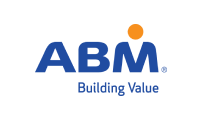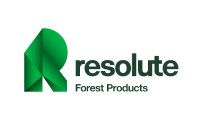From Metrics to Meaning: The Rise of Purpose-Driven Investing
For over two decades, ESG (Environmental, Social, and Governance) factors have shaped sustainable investment. But in 2025, purpose is the new frontier.
As Sustainable Brands explains, purpose-driven investing aims to integrate societal needs into the core investment thesis—not just mitigate harm, but actively contribute to positive impact.
Real-World Application: Who’s Already Doing It?
A growing number of organizations have begun aligning investments with long-term value creation beyond ESG compliance.
-
CPP Investments, Canada’s largest pension fund, began integrating purpose metrics into its portfolio reviews in 2024. By 2025, over 15% of new investments are aligned with UN Sustainable Development Goals (SDGs), with a focus on clean energy, inclusive housing, and sustainable infrastructure.
-
Generation Investment Management screens its portfolios using a proprietary “System Positive” filter to identify companies that contribute to net-positive societal and environmental outcomes.
These examples highlight a significant shift: capital is no longer neutral. Investors are intentionally backing solutions to systemic challenges.
ESG vs. Purpose: How the Bar Is Being Raised
| ESG Investing | Purpose-Driven Investing |
|---|---|
| Screens for environmental, social, and governance risk factors | Centers investment around a meaningful societal or environmental mission |
| Often retrofitted into existing financial models | Embedded at the core of investment strategy |
| Measured by compliance and performance benchmarks | Measured by long-term impact and transformative change |
A 2024 McKinsey report supports this shift, showing that 67% of institutional investors now evaluate investments based on purpose-related KPIs, not just ESG metrics.
The Regulatory Push
Global frameworks are reinforcing this transition. The ISSB’s 2024 guidelines emphasized long-term value creation through purpose metrics. Canada’s climate-related disclosure standards are driving companies to link sustainability with financial materiality.
Together, these regulations signal that purpose is no longer optional—it’s foundational.
Why This Matters for Canadian Professionals
Canada has emerged as a leader in sustainable finance, with ESG fund inflows reaching a record $40 billion in 2024. However, a growing talent gap is limiting the effective implementation of ESG and purpose-driven strategies.
To lead this shift, professionals must evolve from compliance-focused roles to strategic, purpose-aligned decision makers. This requires advanced training and a broader mindset.
Training to Lead the Purpose Transition
The Certified Sustainability (ESG) Practitioner Program, Leadership Edition equips professionals with the knowledge and tools to navigate this transition effectively. The program includes:
-
ESG integration techniques with impact-first thinking
-
Purpose-aligned investment case studies
-
Tools for stakeholder mapping and materiality assessments
-
Alignment with frameworks such as IRIS+, IMP, GRI, and SDG Impact
With sessions available in-person in Toronto or online, it’s a hands-on opportunity to move from ESG metrics to strategic value alignment.
The Purpose Integration Pyramid (Original Framework)
To illustrate the progression from ESG to purpose, consider this original model introduced in the training:
🟦 Level 1: Compliance
Meets ESG reporting requirements (GRI, SASB, ISSB)
🟨 Level 2: Intentionality
Aligns with selected SDGs or thematic ESG fund goals
🟥 Level 3: Integration
Purpose embedded in governance, investment strategy, and risk
🟩 Level 4: Transformation
Capital is actively used to reshape systems (e.g., regenerative agriculture, climate justice)
Addressing Challenges and Building Trust
Despite its promise, purpose-driven investing faces several challenges:
-
Inconsistent impact metrics: Frameworks like Impact Frontiers aim to bring clarity, but standardization is still evolving.
-
Risk of “purpose-washing”: Without transparency, purpose can become another buzzword.
-
Skills gap: Many finance and ESG professionals lack the tools to assess purpose-aligned performance at scale.
Programs like CSE’s aim to close this gap by combining practical tools with theoretical frameworks that build both credibility and competence.
This article is shared in collaboration with the Centre for Sustainability & Excellence (CSE), a global leader in ESG training and consulting, with over 90% of participants rating the course as essential for career advancement in sustainable finance.
Final Takeaway: Invest in Purpose, Lead with Impact
Purpose-driven investing is not just the future—it’s the evolution of finance. As capital shifts toward value creation that benefits all stakeholders, Canadian professionals are uniquely positioned to lead the charge.
👉 Explore or register for the ESG Practitioner Program here.







